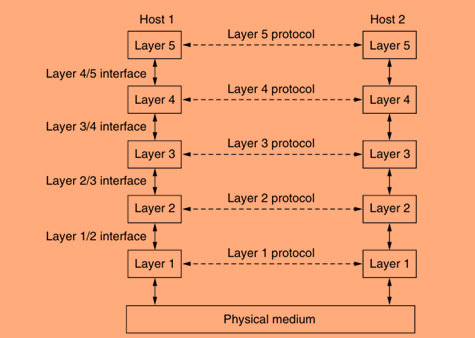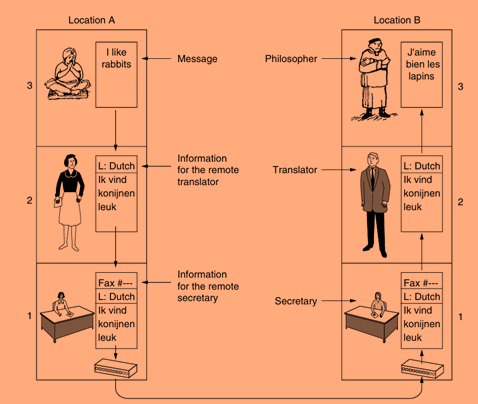Network Software Overview
In modern computer networks, software plays a vital role in ensuring efficient communication between devices. This tutorial will explore the fundamental concepts of network software, including protocol hierarchies, service types, and design considerations.
Protocol Hierarchies
To manage the complexity of network design, most networks are organized into a stack of layers, each built upon the one below it. This layered architecture allows for modular design, where each layer provides specific services to the layer above while hiding the implementation details from it.
Key Features of Protocol Hierarchies
Layered Structure:
Each layer serves a distinct purpose and communicates with the layers directly above and below it.
This structure simplifies the design and implementation of network protocols.
Virtual Machines:
Each layer can be thought of as a virtual machine that offers services to the upper layer while concealing its internal workings. This abstraction allows developers to focus on higher-level functionality without worrying about the details of lower layers.
Protocols:
The rules governing communication between corresponding layers on different machines are known as protocols.
For example, when two devices communicate, they follow the same protocol at each layer.
Example of a Five-Layer Network
A typical five-layer network architecture includes:
Application Layer:
User interfaces and application services reside here.
Provides network services to end-user applications (e.g., web browsers, email clients).
Transport Layer:
Responsible for reliable data transfer and error recovery.
Segments data into smaller packets and manages flow control and error correction (e.g., TCP, UDP).
Network Layer:
Handles routing and forwarding of packets across the network.
Determines the best path for data to travel (e.g., IP).
Data Link Layer:
Manages node-to-node data transfer and error detection.
Ensures data is transmitted correctly over a physical medium (e.g., Ethernet).
Physical Layer:
Transmits raw bitstreams over a physical medium, such as cables or wireless signals.
Defines the electrical and physical specifications for devices.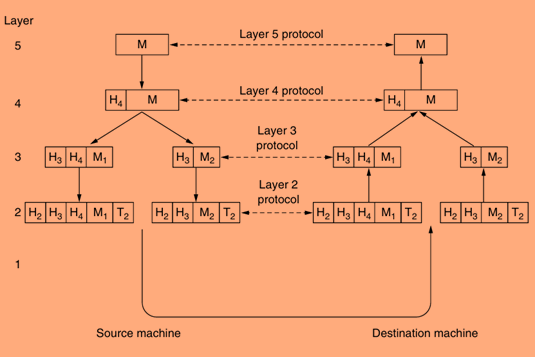
Connection-Oriented vs. Connectionless Service
Network layers can provide two types of services: connection-oriented and connectionless.
Connection-Oriented Service
Definition:
Similar to a telephone call, this service requires establishing a connection before data can be sent. It ensures data delivery in the correct order.
Characteristics:
Establishment Phase:
A connection is established before data transfer begins, often involving parameter negotiation.
Reliable Delivery:
Messages are delivered without loss or duplication, confirmed by acknowledgments.
Message Ordering:
Messages are received in the same order they were sent, ideal for applications like file transfers.
Example:
File transfer applications (e.g., FTP) use connection-oriented services to ensure all data is received correctly.
Connectionless Service
Definition:
This service is similar to sending a letter, where each message is sent independently without establishing a connection.
Characteristics:
No Connection Establishment:
Messages are sent without prior setup for faster transmission.
Unreliable Delivery:
There’s no guarantee that messages will arrive, and they may arrive out of order.
Independent Messages:
Each message carries its own destination address.
Example:
Email and web browsing prioritize speed over reliability and often use connectionless services.
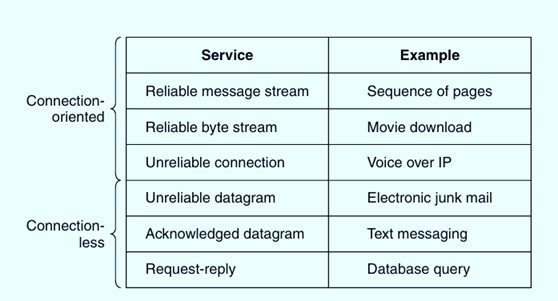
Service Primitives
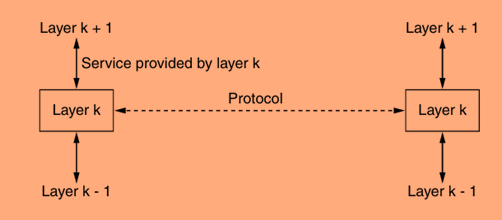 Service primitives define the operations available to user processes for accessing network services. They bridge the gap between applications and the network.
Service primitives define the operations available to user processes for accessing network services. They bridge the gap between applications and the network.
Common Service Primitives for Connection-Oriented Services
LISTEN: Wait for an incoming connection.
CONNECT: Establish a connection with a peer.
SEND: Send data over the established connection.
RECEIVE: Receive data from the established connection.
DISCONNECT: Release the established connection.
Common Service Primitives for Connectionless Services
SEND: Send a message to a destination address.
RECEIVE: Receive a message from a source address.
Conclusion
By understanding these fundamental concepts of network software—protocol hierarchies, service types, and service primitives—you’ll be better equipped to design efficient and reliable network protocols. These concepts are essential for applications that demand robust communication over networks.
A simple client-server interaction using acknowledged datagrams could be implemented as follows:
1. The client sends a request to the server using a connectionless service.
2. The server receives the request and processes it.
3. The server sends a response back to the client using a connectionless service.
4. The client receives the response and acknowledges it.
This interaction demonstrates the use of connectionless services for fast and efficient communication. However, it’s essential to note that connectionless services may not provide the same level of reliability as connection-oriented services.
In conclusion, network software plays a critical role in enabling efficient and reliable communication over networks. By understanding the fundamental concepts of protocol

